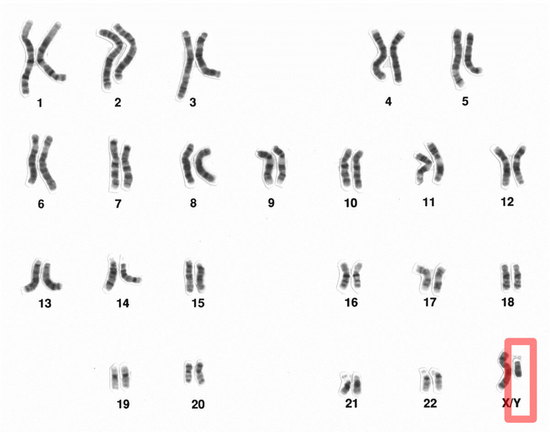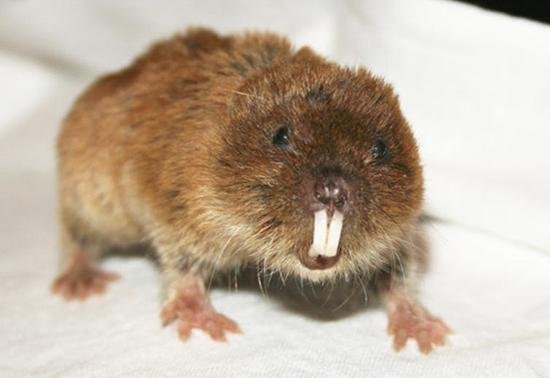Y chromosome may be a symbol of masculinity, but more and more evidence shows that it may not be sustained. Although the Y chromosome carries the "master switch" gene SRY, which determines whether the embryo will develop into male (XY) or female (XX), it contains only a few other genes and is the only chromosome not necessary for life's continuation.
More importantly, the Y chromosome has rapidly degenerated so that women have two perfectly normal X chromosomes, whereas men have only X chromosomes and one atrophied Y chromosome. If sustained at the same rate of degradation, the Y chromosome may disappear completely within 4.6 million years. This may sound long, but you will not think of it when you consider that life on Earth has existed for 3.5 billion years.
The Y chromosome is not degraded from the outset. If we call the clock back to 166 million years ago, this story is completely different for the first mammals. The early "primitive" Y chromosome initially consisted of the X chromosome and contained the same genes. However, the Y chromosome has a fundamental flaw: we have two chromosomes in each cell, unlike the other chromosomes, the Y chromosome exists only as a copy and passed to their son through his father.

This means that the genes on the Y chromosome can not be genetically engineered, and the "elution" of each generation of genes helps to eliminate damaging genetic mutations. The Y-chromosome genes that were deprived of the recombination benefit degrade over time and eventually disappear from the genome.
In spite of this, recent studies show that the Y chromosome has developed many very convincing mechanisms to "brake", slowing the rate of genetic loss and putting it at a standstill. For example, Denmark recently tested Y chromosome sequencing from 62 individuals and found that it favors large-scale structural recombination in order to allow "gene amplification," acquiring multiple copies of genes, promoting healthy sperm function and reducing genes loss.
The study also shows that the Y chromosome has developed an unusual structure called "palindromes." In this structure, both the forward and reverse readings of the DNA sequence are the same, just as kayak, an English kayak, protects it from further degradation. Researchers found a high frequency of "gene transfer events" in the "palindrome" sequence of the Y chromosome, which is basically a "copy-and-paste" process that allows the use of undamaged backup copies as templates for repairing damaged genes .
Looking back at a few other species (Y chromosomes also exist in mammals and other species), there is growing evidence that the "gene amplification" of the Y chromosome is a common phenomenon. These amplified genes play a key role in sperm production and in the regulation of offspring sex ratio (at least in rodents). Recently, a study published in the journal Molecular Biology and Evolution showed that an increase in the number of mouse gene copies is the result of natural selection.
The scientific community (as it is now in Britain) is now divided into "disappeared" and "reserved" regarding whether the Y chromosome really will disappear. The latter believes that the defense mechanism of the Y chromosome is excellent and may save the Y chromosome. However, "Vagrants" say everything they do is dying before the Y chromosome falls off the cliff. This debate will continue.
Jenny Graves, of La Trobe University in Australia, said Y chromosomes will inevitably fail in the long run, even though they may be taking longer than expected. In a 2016 paper, Graves pointed out that Japanese mice and voles have completely lost the Y chromosome and that the genes lost or produced on the Y chromosome inevitably lead to reproductive problems. This, in turn, can push the final formation of new species.

As we pointed out in the new e-book, even if the human Y chromosome does disappear does not necessarily mean that men themselves will become extinct. Even in species that have completely lost the Y chromosome, reproduction still requires male and female. In these cases, the SRY "master switch" that determines the abnormality of the gene has been transferred to different chromosomes, which means that these species can also produce males without the Y chromosome. However, sex-determining new chromosomes should begin to degenerate again, as they also lack the ability to recombine, which will cause them to disappear like the previous Y chromosome.
However, what is interesting about humans is that when normal human reproduction requires the Y chromosome, many of the genes it carries are not necessary if you are using assisted reproductive technology. This means that genetic engineering may soon replace the gene function of the Y chromosome, allowing same-sex couples or infertile men to become pregnant. However, even if everyone is pregnant in this way, it is unlikely that fertile people will naturally stop breeding.
Although this is a fascinating and controversial area of genetic research, there is little need to worry. We do not even know if the Y chromosome will disappear. And, as we have shown, even though the Y chromosome disappears, we are likely to continue to need men so that normal breeding can continue. In fact, the selection of several "lucky" males like the "farm animal" system to breed most of the offspring apparently does not happen to humans. Anyway, for the next 4.6 million years, there will be more pressing concerns that need to be addressed.
Authors get paid when people like you upvote their post.
If you enjoyed what you read here, create your account today and start earning FREE STEEM!
If you enjoyed what you read here, create your account today and start earning FREE STEEM!